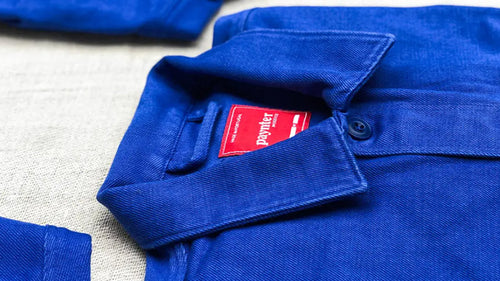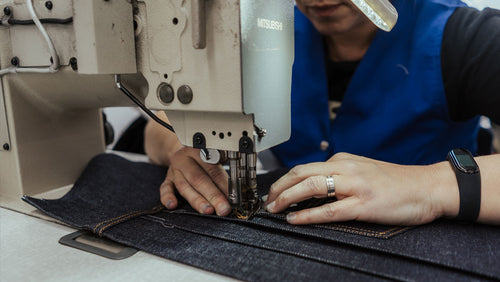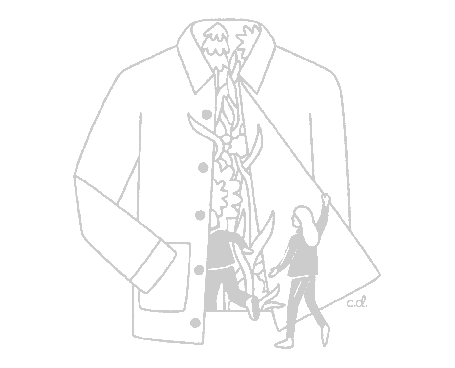W. David Marx is the author of two books: Ametora: How Japan Saved American Style, a history of menswear in Japan, and Status and Culture, a general theory of how culture works and why it changes. He’s lived in Tokyo for twenty years, so before we headed there last month, we asked him for a guide on how to best spend 72 hours in the city.
Tokyo is the world’s largest city by metropolitan area. This is not just a piece of geographical trivia but becomes immediately obvious once you arrive. The best and worst part of Tokyo is that it feels endless. That enormity can be exciting for long-time residents, as there is always a new neighborhood to explore. But it tends to be very daunting to first-time visitors who hope to grasp the city's layout in their heads as they set out for sightseeing.
The first thing to do before visiting Tokyo is to give up on any hopes that Tokyo can be fully known. There is just too much city out there. What you should focus on instead is understanding how all of the city’s historical layers work together to make Tokyo what it is. This three-day guide provides a way to experience very old Edo period spots, mid-20th century establishments, and early 21st century cutting-edge culture.
Another important lesson for visiting Tokyo is to remember that the best tourism in Japan is rarely about schlepping to “sights” like museums, monuments, temples. There are some great museums, monuments, and temples, but the best experiences are going to a neighborhood, walking the streets, stepping into shops, and eating and drinking whatever looks good. Tokyo is a city built for serendipitous exploration. Walking just one street over always provides a completely different experience.
A disclaimer on restaurants: The tourist explosion in Japan means that it’s increasingly difficult to get into top spots (unless you work hard in advance to get reservations). At the same time, the vast majority of restaurants are delicious, so don’t obsess over getting into specific places. Also, this guide does a poor job of recommending sushi, ramen, and other classic Japanese cuisines, so definitely substitute those in where desired.
Day One: New Tokyo
Start in Shibuya, the simultaneously spiffy and scruffy commuter hub, famed as a Nineties youth culture center. Shibuya has seen better days, but you’ll need to see the “Shibuya scramble” crossing the same way you have to see Times Square when visiting New York.
Breakfast. Shibuya oddly offers few breakfast spots outside of the main coffee chains, so I recommend WHITE GLASS COFFEE (Sakuragaokacho 23−18, Shibuya City), a refined third-wave coffee shop.
Day Tour. The best way to understand Tokyo’s endless sprawl is to go on the roof of a very tall building, and the Shibuya Sky observation deck is a good option. From there, walk up to the women’s shopping building Shibuya 109 to see the current state of teenage “gyaru” fashion (although we are about a decade away from the style’s prime years). Loft is a great place to buy stationary and craft goods, and PARCO has boutiques from many key Japanese fashion brands. Before lunch, start walking towards Harajuku.
There are two routes: up towards the Meiji Jingu Shrine, which is always good for a quick visit to get a sense of traditional Japanese Shintō culture, or down the fashion shopping alley, Cat Street. If you choose Cat Street, check out Pink Dragon (Shibuya 1-23-23, Shibuya-ku), the Art Deco palace built in the 1980s dedicated to the Fifties fashion boom responsible for Harajuku becoming a youth fashion center.
Lunch. Harajuku Gyozaro (Okajima Building, Jingumae 6-2-4, Shibuya-ku) has a streamlined menu focused on Chinese gyoza dumplings (fried and boiled) as well as great sides such as cut cucumber in miso dressing and bean sprouts covered in gravy.
Afternoon tour. After lunch, walk around the shops in Harajuku / Omotesando / Aoyama, the world’s largest neighborhood dedicated to fashion. There are too many options to list out. The Comme des Garçons store (Minami-aoyama 5-2-1, Minato-ku), with its curved glass façade, is always a highlight.
Coffee. At the second-floor Cafe Les Jeux Grenier (Murayama Building 2F, Minami-aoyama 5-9-5, Minato-ku), try the au lait glacé which pours a layer of ice coffee atop cold milk.
Dinner. Take the train up to the urban gritty commuter hub Shinjuku, and eat dinner at the izakaya Cha Cha Hana (Kabukicho 1-1-1-, Shinjuku-ku), a quiet oasis in the middle of the (extremely tame) red-light district, Kabukicho.
Bar. After dinner, take a stroll through Golden Gai to see the rows of tiny bars (which in the last two decades went from member-only haunts that would mercilessly rip-off outsiders to a welcoming tourism destination for American Midwesterners). Then walk back to the station and get a real drink at Suntory Lounge Eagle (B1F, Shinjuku 3-24-11, Shinjuku-ku), a mid-century basement bunker where one can sample Japanese whiskey and traditional takes on classic cocktails at Sixties prices.
Day Two: Mid-Century Tokyo
Breakfast. Start the day at Kanda Station and go to Cafe Ace (Uchikanda 3-10-6, Chiyoda-ku) which is a legendary example of a kissaten, a mid-century Japanese café. Order a Golden Camel coffee, try the nori toast (toasted white bread with nori seaweed and butter), cornbeef sandwiches, and the “American donuts.”
Day Tour. Walk towards the Jimbōchō area, famous for its used book stores but also for its old buildings in a city that was otherwise bombed into rubble in 1945. Pass through the lobby and hallways of the academic clubhouse Gakushikaikan, built in 1928. Kitazawa Books (Kitazawa Building 2F, Kanda Jinbocho 2-5, Chiyoda-ku) is the city’s best used English bookstore. Magnif (Kanda Jinbocho 1-17, Chiyoda-ku) is the world’s best store for used fashion magazines.
Lunch. Jimbōchō is considered a student area, and there is no food that Japanese university students love more than curry. Try out classic Japanese-style curry at either Ethiopia (Kanda-ogawamachi 3-10-6, Chiyoda-ku), famed for its spicy brown gravy topped with vegetables, or Bondy (2F, Kanda Jimbocho 2-3, Chiyoda-ku), known for its baked potato on the side and copious free pickle condiments.
Coffee. Make your way to Nihonbashi and stop for coffee at Saitō Coffee Nihonbashi Muromachi (Nihonbashi Muromachi 4-1-3, Chuo-ku), a very clean version of an old-style kissa where ice coffee is served in copper cups.
Afternoon tour. Walk from Nihonbashi, with its monumental Mitsukoshi department store, towards Ginza and Yurakuchō. There are again too many good stores to mention, but I always stop in Beams Plus (Marunouchi-Nakadori Building, Marunouchi 2-2-3, Chiyoda-ku) for contemporary takes on “ametora” American traditional clothing. Make sure to also see the glorious Tokyo Station in its brick splendor, and if the weather is nice, walk the Imperial Palace gardens. The Marunouchi shopping street that begins behind the Marunouchi Building is also excellent.
Dinner. In Ginza, try classic yōshoku Western-Japaense hybrid cuisine — croquettes, omelet rice, and hamburg steaks — at either Rengatei (Ginza 3-5-16, Chuo-ku), a Meiji Era establishment that invented many of these classic dishes — or the very 1960s Ginza Swiss (Ōkura Bekkan 2F, Ginza 3-4-4, Chūō-ku) down the street.
Bar. Enjoy a martini or an old fashioned by making your way through a dark back alley into the subterranean Lupin (Tsukamoto Fudōsan Building B1F, Ginza 5-5-11, Chūō-ku), one of Japan’s oldest bars and frequent haunt of depressed novelist Dazai Osamu.
Day Three: Shitamachi Downtown Tokyo
Start in Asakusa on the very East side of town. Asakusa served as Tokyo’s cultural center before the 1923 earthquake, and today represents “Old” in an otherwise very new city.
Breakfast. Start the day off with a proper mōningu breakfast set at Lodge Akaishi (Asakusa 3-8-4, Taitō-ku), a café that Beat Takeshi once frequented.
Day Tour. Drift around old-timey Asakusa, including a visit to Sensōji temple and make sure to walk the shopping arcades. Also stop by Kappabashi which sells a large variety of culinary tools and kitchenware.
Lunch. Try out Monjayaki — a distinct Tokyo form of Okonomiyaki where you eat bits of charred goo on hot grill plates. There are many options in Asakusa.

Coffee. After lunch, cross the river into Mukojima to have a coffee or juice at the truly bizarre Kado (Mukojima 2-9-9, Sumida-ku), a tiny space covered in semi-religious Western oil paintings that serves sandwiches on walnut bread.
Afternoon tour. From Mukojima, walk down towards Tokyo Sky Tree on the way to Kuramae, an up-and-coming shopping neighborhood that was once a quiet wholesaling and warehousing area. Kakimori (Misuji 1-6-2, Taito-ku) is a top-tier stationery shop. chigaya across the street is famous for its donuts (Torigoe 2-8-11). AndreM Hoffwan is an underground store for famed stylist Akio Hasegawa’s new brand, Cahlumn. Visit the art gallery Almost Perfect (Kojima 2-3-2, Taito-ku) inside of a former rice shop dating from 1924.
Early drink. Grab a craft gin or Japanese amaro at the standing bar Nomura Shoten (Misuji 2-5-7, Taito-ku).
Dinner. At Tonkatsu Sugita (Kotobuki 3-8-3, Taito-ku), have a classic fried pork cutlet with the world’s greatest condiment — a tangy red-brown Worcestershire-based sauce that people in Japan simply call “sauce.” At Sugita the master fries up the pork in giant copper vats.
...
Especially commissioned illustrations, by Tokyo based illustrator Yuki Uebo.







